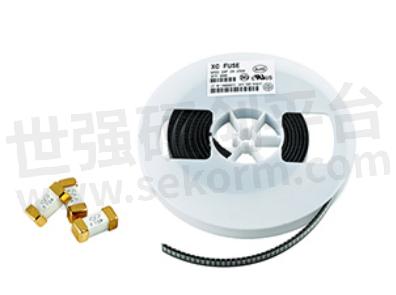How to Choose a Fuse

Firstly, what is a fuse? Fuses are made of low melting point alloys, commonly used as alloys of lead and tin (75% lead and 25% tin), as well as alloys of lead, tin, and lead-antimony. Generally, fuses are installed in fuse boxes (fuses) or knife switches and connected in series in the circuit. When the current in the circuit is too high, due to the thermal effect of the current, the fuse first melts and is burned out, causing the circuit to automatically cut off, thereby protecting the safety of the power supply and electrical equipment. The rated current of a fuse (the maximum allowed current) and the fusing current (the minimum current that causes the fuse to blow) are its two important parameters, and its fusing current is generally about twice the rated current. The selection of the rated current of the fuse should be correct so that it does not blow during normal power consumption of the circuit. In case of severe overload or short circuit, it will immediately blow and automatically cut off the circuit. If the fuse is too thick, it will not protect the circuit. If it is too thin, it will also affect normal electricity consumption.
The selection of fuses should pay attention to the following four points:
The current and voltage passing through the fuse in your product circuit depend on the fuse current and voltage you want to choose.
2The characteristics and requirements of your circuit determine whether to choose a fast break or slow break fuse when it blows. For circuits that generate pulses, the slow break is generally chosen, while for pure resistive circuits, the slow break is generally chosen.
At the same time, it is necessary to consider the impact of environmental temperature in the product circuit on the lifespan of the fuse.
Design the size of the space to determine the size of the fuse.

Fig.1
- +1 Like
- Add to Favorites
Recommend
- Determine if the Fuse is Burning (Fuse)?
- The Difference between Fuses and Fuses
- Repair Methods for Fuses -0805 Fuses
- Very Fast Acting Fuse PICO® II Fuse Series, Designed for Battery Management System | Littelfuse
- Calculation Method for Melt Current of Fuse Fuses
- The Difference between Self Recovery Fuse and Blown Fuse
- The Location where the Fuse is Connected to the Circuit and Connection Method of Patch Fuse in Circuit
- Littelfuse expands its fuse manufacturing operation in China, Cuting Customer Order Fulfillment Lead Time by Half
This document is provided by Sekorm Platform for VIP exclusive service. The copyright is owned by Sekorm. Without authorization, any medias, websites or individual are not allowed to reprint. When authorizing the reprint, the link of www.sekorm.com must be indicated.





























































































































































































































































































































































































































































































































































































































































































































































































































































































